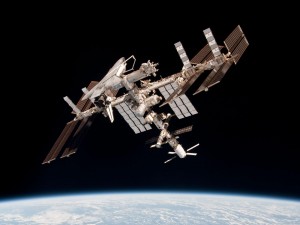Space Exploration Careers Outlook
 Space exploration is an expensive endeavor for the U.S. government. In recent years, NASA’s budget has been cut more frequently than it has been maintained or increased. The agency underwent a restructuring and streamlining program that included a goal of reducing its civil-servant staff. In 2004 the trend reversed when President George W. Bush called for a new initiative to further space travel and exploration, and as a result NASA projected a $1 billion budget increase over the span of five years. This was expected to positively affect the NASA workforce.
Space exploration is an expensive endeavor for the U.S. government. In recent years, NASA’s budget has been cut more frequently than it has been maintained or increased. The agency underwent a restructuring and streamlining program that included a goal of reducing its civil-servant staff. In 2004 the trend reversed when President George W. Bush called for a new initiative to further space travel and exploration, and as a result NASA projected a $1 billion budget increase over the span of five years. This was expected to positively affect the NASA workforce.
Space exploration technology is just one sector of the aerospace industry, which covers the larger industry of commercial aircraft production. Many people work for the private aerospace companies that develop and manufacture space equipment. In 2005, the U.S. aerospace industry generated a record $170 billion in sales, according to the Aerospace Industries Association (AIA). The association predicts that aerospace industry sales to NASA and other nondefense federal agencies will increase during the next several years.
The AIA reports that employment in this industry (which includes aerospace products and parts, plus search, detection, and navigation instruments) increased to 612,300 in 2005, marking the second straight year of employment growth. The U.S. Department of Labor predicts an 8 percent increase in jobs through 2014—a percentage that is lower than the average predicted for all industries. This slow growth is due mainly to foreign competition plus a decline in air travel and demand for new commercial aircraft. Other areas, such as military aircraft and missiles, will experience better growth. Opportunities are likely to open up steadily as people retire or leave the industry, but competition for employment will be stiff.
Terrorism has had a major impact on the aerospace industry, particularly on commercial air travel and airlines, which have experienced a drop in business. Areas of the industry serving the military have grown in response to the terrorist threat, and this has most likely included some spending for space activities such as surveillance satellites. A report from AIA indicated a steady increase in spending by NASA and related agencies in recent years.
Aerospace companies will be likely looking for qualified technicians in fields such as laser optics, mission operations, spacecraft integrations, hazardous materials procedures, production planning, materials testing, computer-aided design, and robotic operations and programming. Students interested in space exploration careers may do well to take advantage of the improvement in the commercial aircraft market to gain experience that helps them gain the upper hand for the more competitive space exploration jobs in the future.
Related Career Field:
Related Careers:
- Aeronautical and Aerospace Technicians
- Aerospace Engineers
- Astronauts
- Astronomers
- Astrophysicists
- Electrical and Electronics Engineers
- Engineers
- Industrial Engineers
- Mechanical Engineers
- Pilots
- Robotics Engineers and Technicians
For More Information:
- Aerospace Industries Association
- Amateur Astronomers Association of New York
- American Astronomical Society
- American Institute of Aeronautics and Astronautics
- National Aeronautics and Space Administration (NASA)
- Students for the Exploration and Development of Space (SEDS)
- Aerospace Industries Association of Canada
